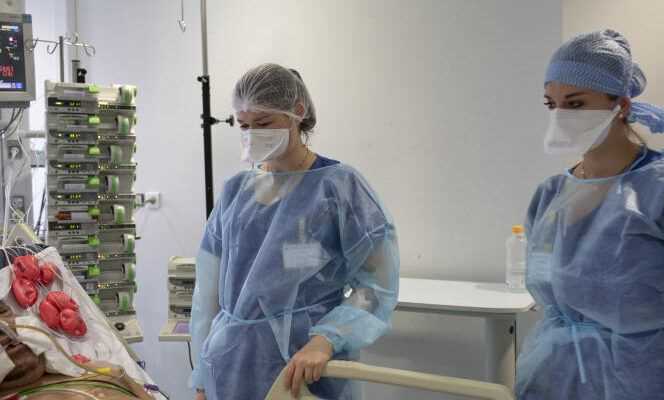“34, 52, 39, 58, 65…” Doctor Clotilde Bailleul pivots on herself and lists the ages of the patients who occupy each box of the main unit of the intensive care unit “respiratory distress, severe infections” (DRIS) of the North hospital in Marseille. Two in their thirties, two in their fifties, one in their sixties. All affected by the coronavirus, all now negative but in critical condition and under intensive surveillance. Here, as in the two other intensive care units of the North hospital, the drop in the average age of patients with Covid-19 is a reality that everyone perceives. “They are younger and less carriers of comorbidities”, confirms the hospital practitioner, who arrived a few months ago in this regional reference center.
In Provence-Alpes-Côte d’Azur, 510 Covid-19 patients were in intensive care on Tuesday March 23, according to figures from the regional health agency. 40% were under 65. Behind his desk, Professor Laurent Papazian, head of the resuscitation center of the North hospital and Covid-19 departmental coordinator, takes the curves. “In November, those under 65 accounted for a third of patients in the region. The shift is gradual, but clearly visible on this third wave. And in North, the evolution is even stronger and exceeds 50% of cases. And of our 31 Covid-19 patients, three are in their thirties. “
Causes “difficult to pin down”
The causes of this rejuvenation? For the teacher, they remain “Difficult to define”. The location of the hospital, in working-class districts of Marseille that are younger than the rest of the city; the British variant, which studies say are more virulent and contagious; young patients who are slow to come to the hospital.
“50 deaths in the region’s sheaves each week is enormous. And they are not all cacochymous old men ”, insists Professor Laurent Papazian, head of the intensive care unit of the North hospital.
“A lower tolerance to the drop in oxygen than a person who is already in respiratory failure?” “, also wonders Laurent Papazian. And then there is, of course, the weariness of having to apply barrier gestures, the trivialization of the threat. “We hear a lot about the psychological consequences after going into intensive care. But what must be repeated is above all that 30% to 40% of intubated patients die ”, he continues. “50 deaths in the region’s sheaves each week is enormous. And they are not all cacochymous old men ”, he insists.
You have 67.73% of this article left to read. The rest is for subscribers only.
